You may not find this terribly rewarding unless you're included here, so this is a good time for casual and random browsers to turn back before they get too caught up in the sweep and majesty of the proceedings and can't let go.
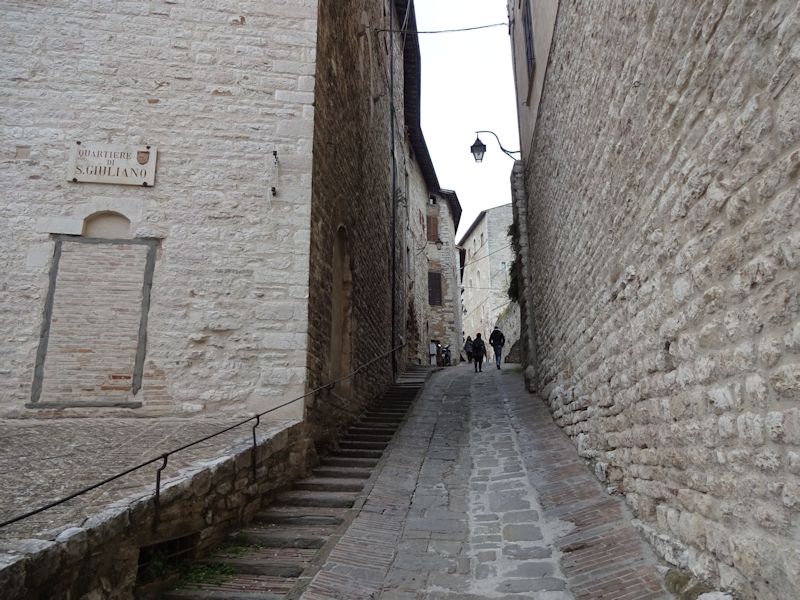
Full steam up the Via Ducale at the top of the town, overlooking the Piazza Grande and our hotel, 15 November 2015

The Via Ducale continues right through the basement level of the Ducal Palace, out the other side and, now called the Via Cattedrale, down to the River Camignano again.

But through the six arches there is access to the ducal hanging gardens.
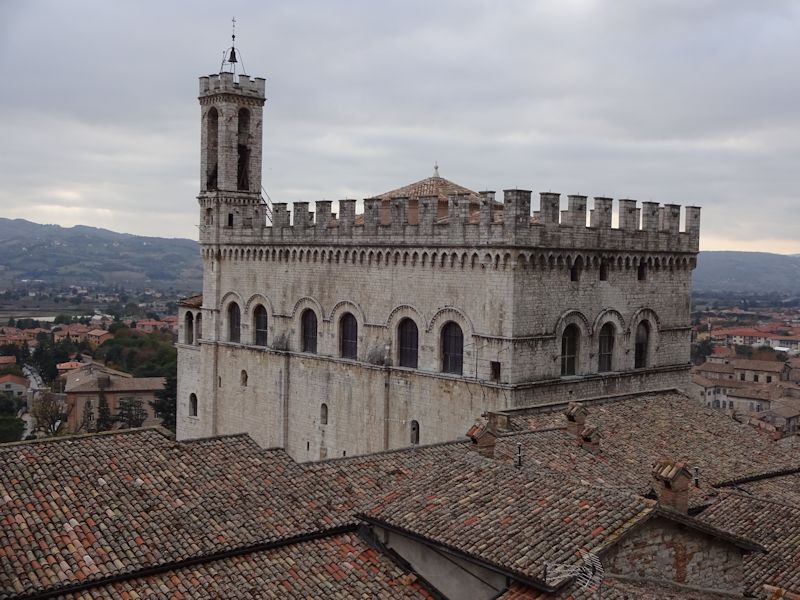
The Palazzo dei Consoli from the ducal gardens. The Duke in question is Federico III da Montefeltro (1422-1482), lord of Urbino after 1444 and its Duke after 1474. He was born in Gubbio as the illegitimate son of the then lord of Urbino and Duke of Spoleto, and rose to become one of the most successful soldiers of the age, as well as one of its most revered patrons of Renaissance art and culture, called "the Light of Italy".

That's our balcony/terrace seen from the duke's gardens. Federico began his career as a condottiere or mercenary commander at 16 under Niccolò Piccinino, and when his half-brother the first Duke of Urbino was assassinated in 1444 he seized that city for himself. He sometimes paused but never ceased his military career, leading his company under Francesco Sforza, then in the service of Florence, then of Milan in 1450 after Sforza had become Duke there -- then of the Aragonese King of Naples against Florence, then for the Pope in the Kingdom of Naples, and in the Marche against his lifelong enemies the Malatestas; then for Milan again under Galeazzo Sforza, and then in 1469 he was sent by the Pope to occupy Rimini but decided to keep it and defeated a papal army to do so, though he then sold it back to the Malatestas. Eventful life.

The rooftop gardens of our hotel, the Relais Ducale, from the ducal gardens. The next Pope, a della Rovere, re-created him Duke of Urbino in 1474, married his own nephew to Federico's daughter Giovanna, and sent him off to subdue the Florentines; he brought 600 troops to await the success of the Pazzi Conspiracy against the Medicis in 1478, but it didn't succeed and evidently he went home. In 1482 he was hired by Ercole I of Ferrara to attack Venice, but died of a fever on the way.
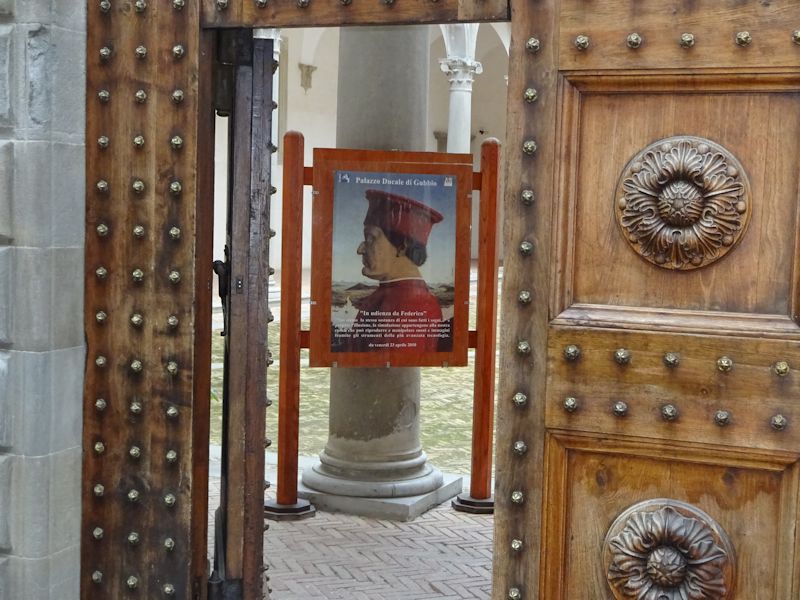
That's the Duke of Urbino in the famous portrait by Piero della Francesa, shown from his good side because he'd lost his right eye and some of his face in a tournament. Gubbio, his birthplace, was within his territories, and beginning in 1470 he had this palace built in a style that evinces his much more famous palace in Urbino.

That's the front door of the Palazzo Ducale (not very spacious; perhaps he just plunked it down conveniently outside the cathedral). We'll visit the interior another time when Kristin's with us. After Federico's death, his son Guidobaldo, married to the daughter of Federico I Gonzaga of Mantova, inherited but died with no heirs in 1508; as he had adopted his sister's son Francesco Maria I della Rovere as his heir, with a little help from the 'Warrior Pope', Julius II della Rovere, the title and property passed to the Della Rovere family. Urbino and Gubbio remained in that family until it was all forcibly incorporated into the Papal States in 1625 or '26.
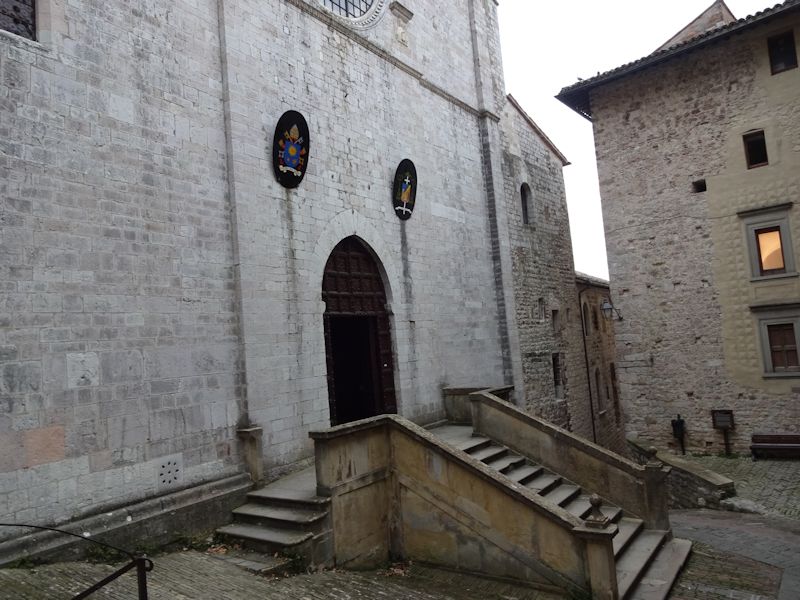
Here, indeed, is the Duomo -- perhaps it had a commodious piazza in front of it when it was built in the late 12th century and early 13th, before the Duke decided he needed that for his palace. That's unfair; before the Duke bought it and made it over, the existing building had housed the magistrates' offices before the Palazzo dei Consoli was built, and afterwards as housing for the city watch.
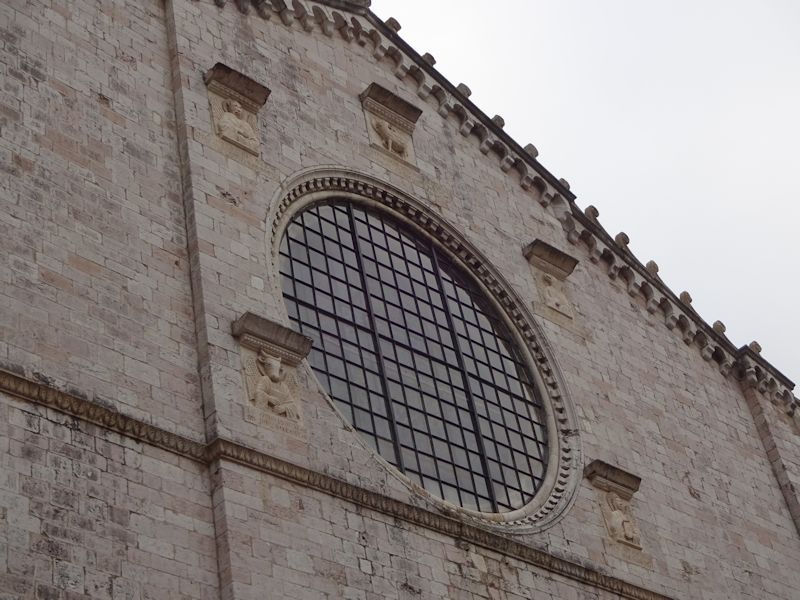
The Gothic cathedral's rose window, surrounded by the symbols of the four Evangelists and somebody else.

A simple nave on a latin cross

Ten arches with the Gubbian characteristic "wagon vaulting"

-- Don't tread on me. Anymore.

St Francis and his wolf friend
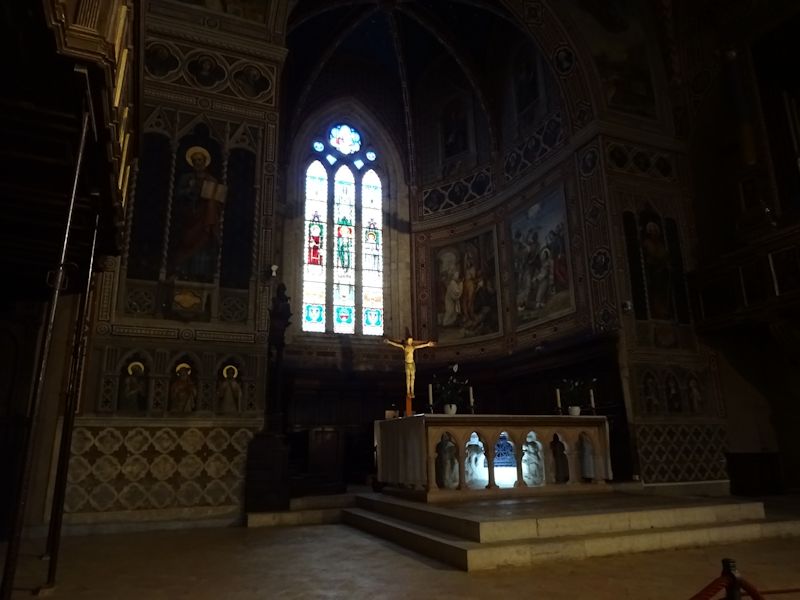
The altar with stained glass windows, apparently from the 12th century. The church is dedicated to the Numidian Saints Mariano and Giacomo, whose remains were brought here in the 5th century and housed in the pre-existing Romanesque church. They're still there under the altar, in a Roman sarcophagus.

The nave with frescoes in the side chapels . . .
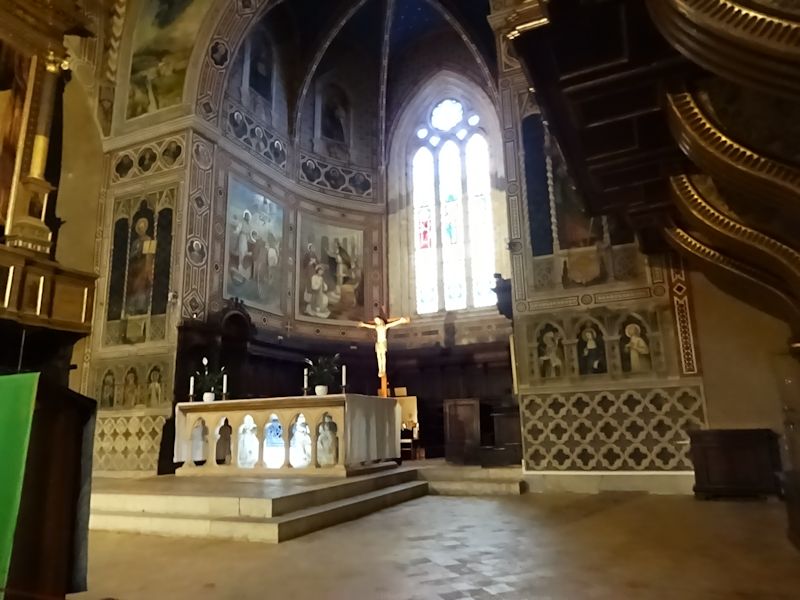
. . . and in the apse
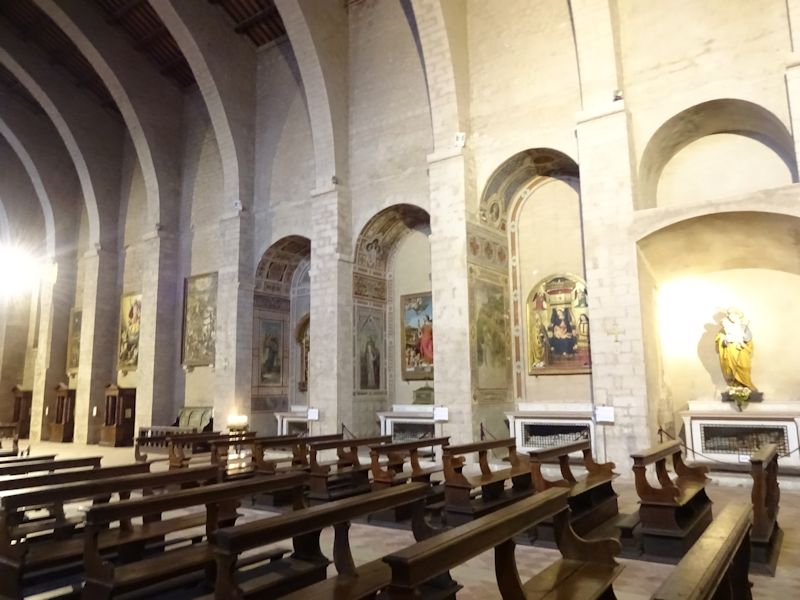
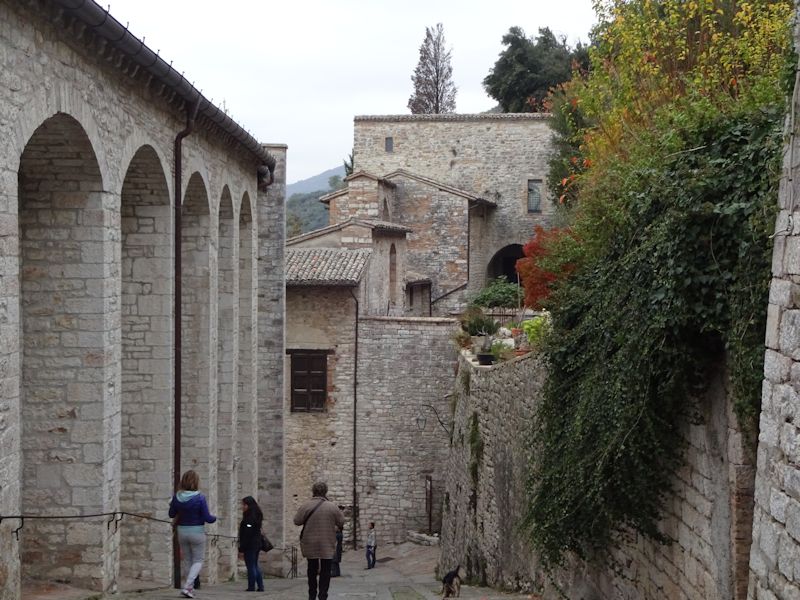
The Via Sant'Ubaldo continues from the front doors of the Duomo and Palazzo Ducale up behind the Duomo to the city gate leading up the mountain.
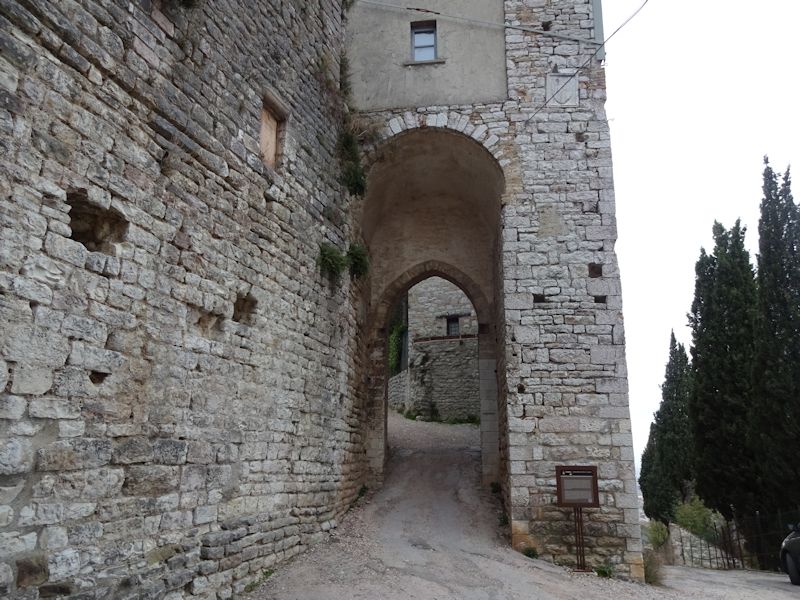
St Ubaldo's Gate leading through the 14th and 15th century city walls, with the road leading up to the Sanctuary of St Ubaldo up the mountain

Gubbian rooftops from near the Porta Sant'Ubaldo

Down the little road just inside the city walls
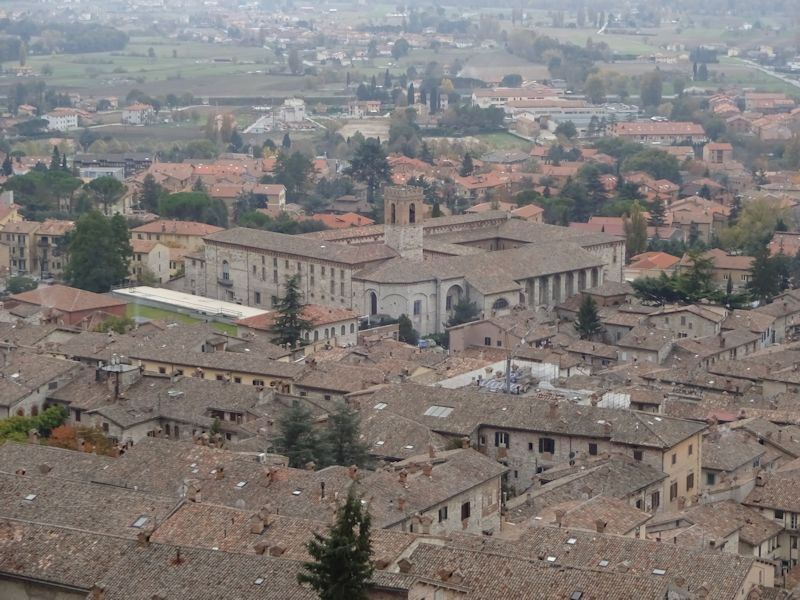
The San Pietro Benedictine monastery, from the 11th century

Back down to XX Settembre street where it passes down into Dante Alighieri street in front of the Church of San Marziale
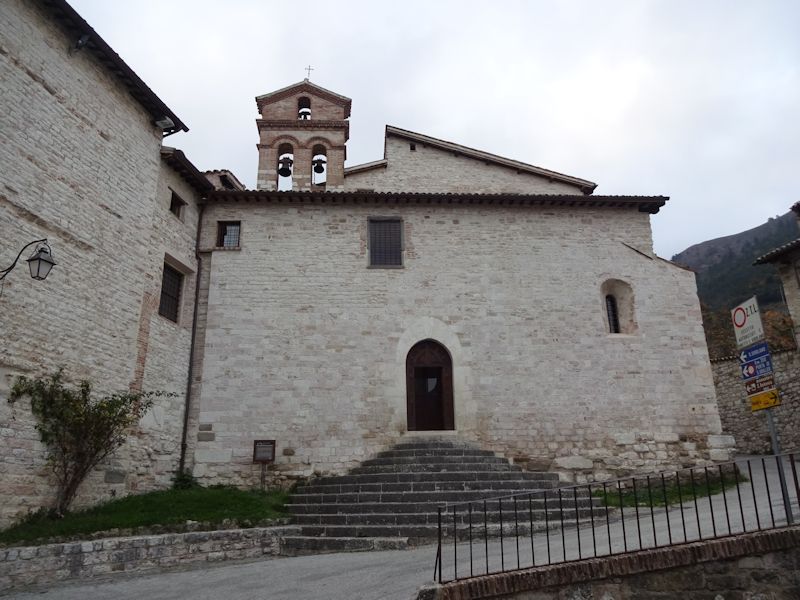
The church of San Marziale, a very strange 12th century Romanesque building with two naves but no façade
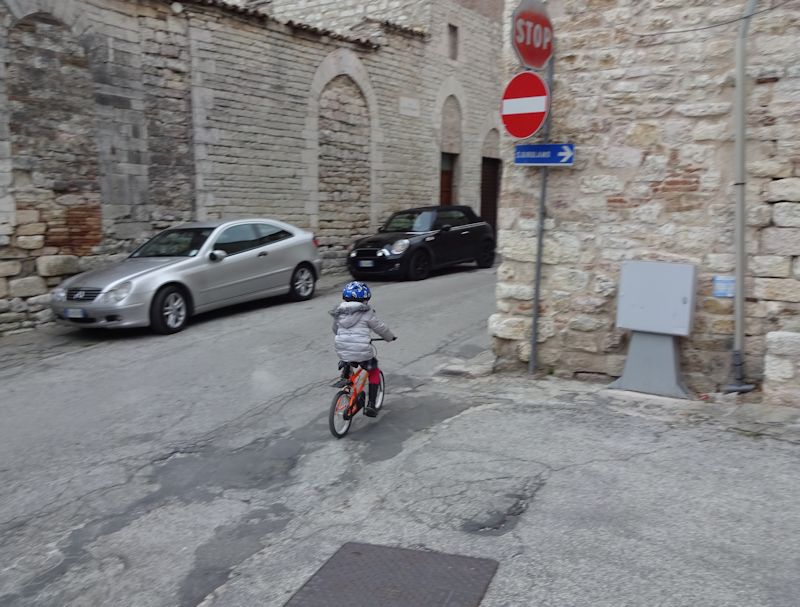
-- Hey kid, that's a one-way street!
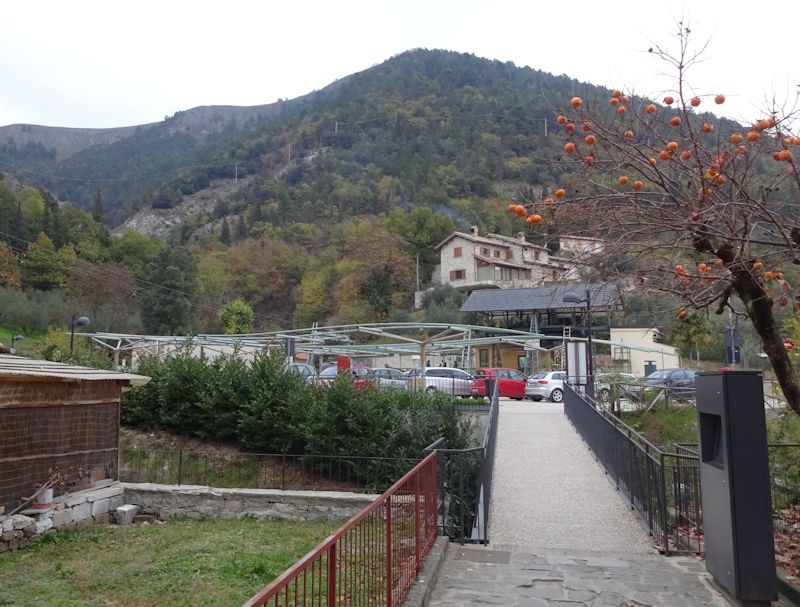
The carpark at the funivia

Another happy family enjoying their funivia ride up Monte Ingino
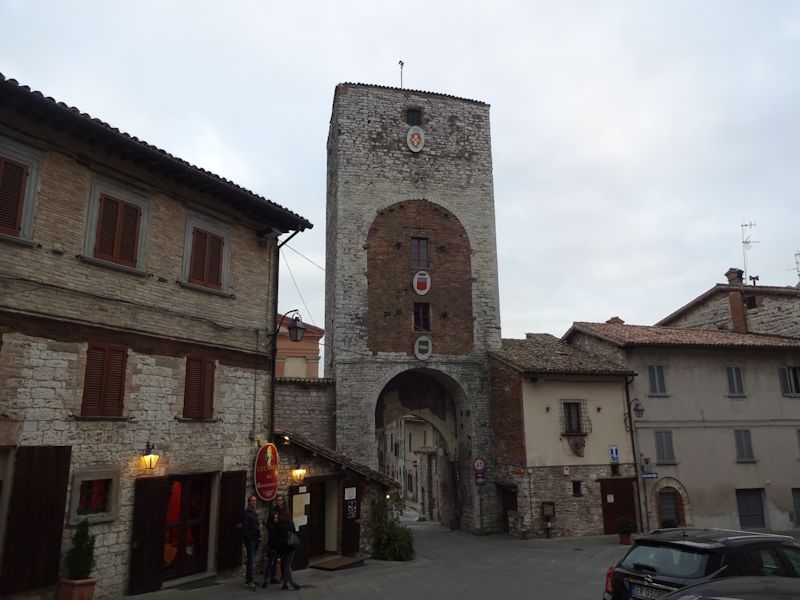
At the southern end of town, the Porta Romana, part of the 14th century defenses, so called because the road led out towards the Via Flamina, which led to Rome.

The Porta Romana houses a small ceramics museum.

The Church of Sant'Agostino, from the later 13th century, just outside the walls near the Porta Romana

Wagon vault ceiling

A very loaded apse with 26 frescoes by Ottaviano Nelli of Gubbio, in about 1420, on the life of St Augustine, nearly impossible to see.
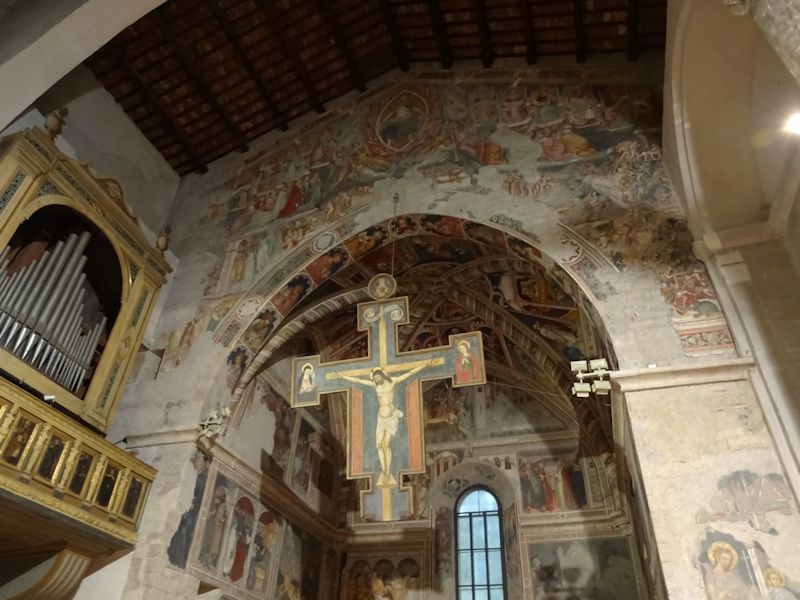
Nelli's busy fresco project

The nave of St Augustine's
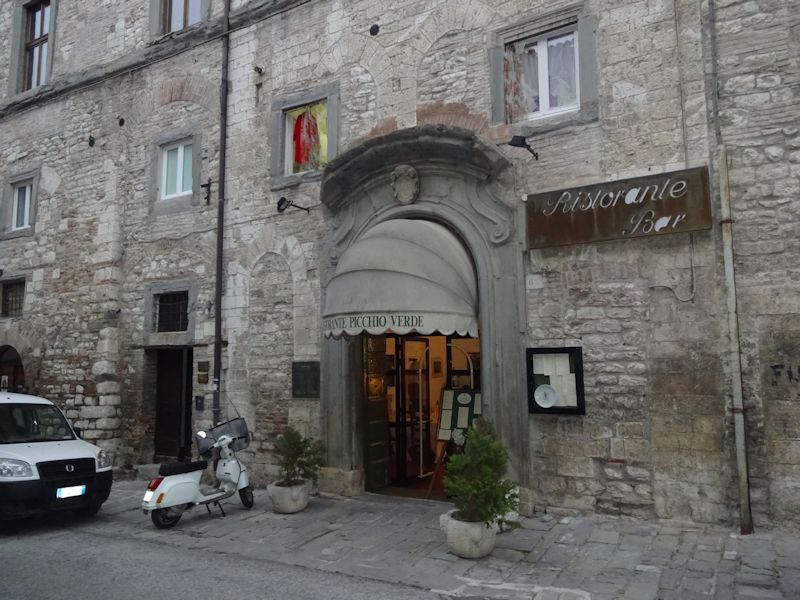
A restaurant, perhaps the only one we didn't get round to trying, on the Via Savelli della Porta
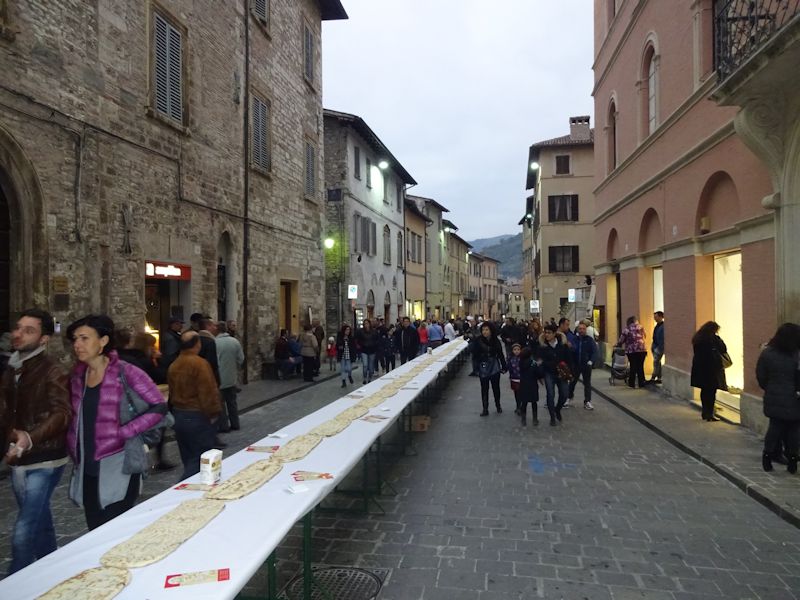
This, down the middle of the Corso Giuseppe Garibaldi, is 400 metres of Crescia Chocotartufo

A civic event, supposedly for the kids, with the collaboration of "La Vera Crescia di Gubbio"
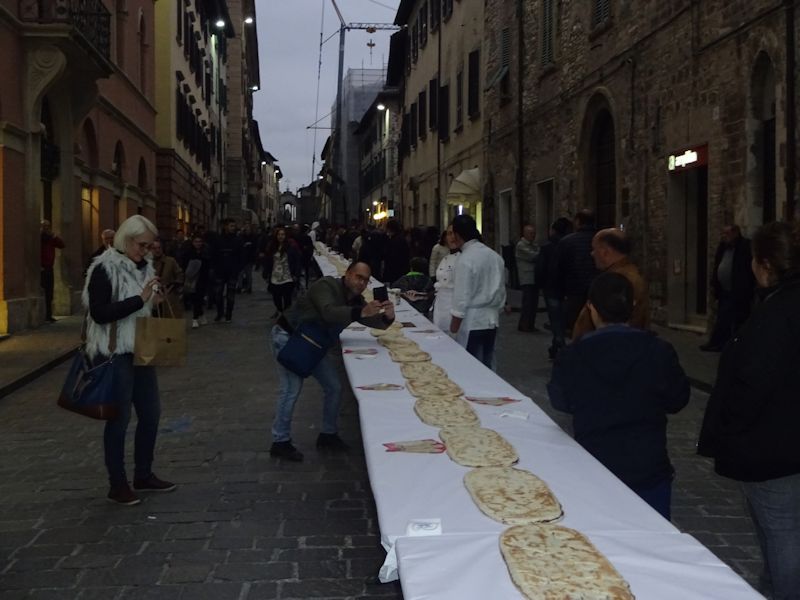
With squads in chefs' suits posted all along the way, preparing to do the necessary when the whistle blows
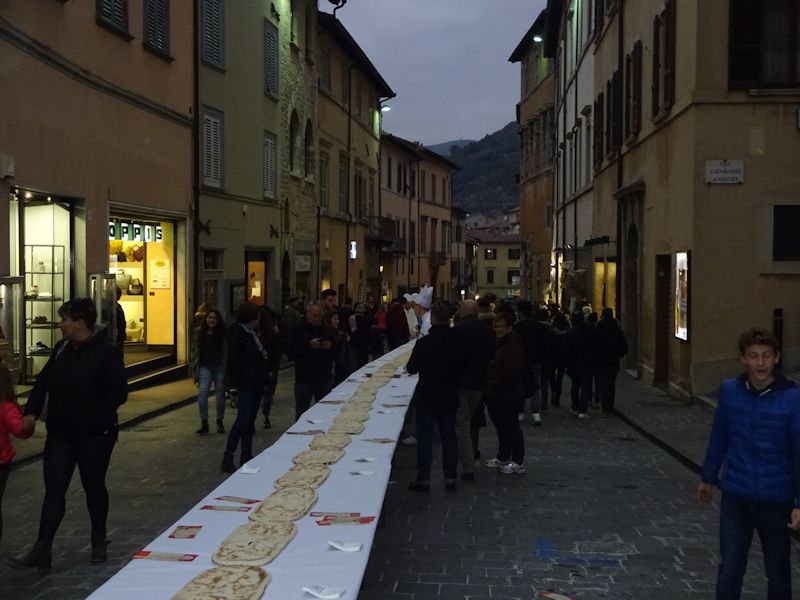
Should we wait?
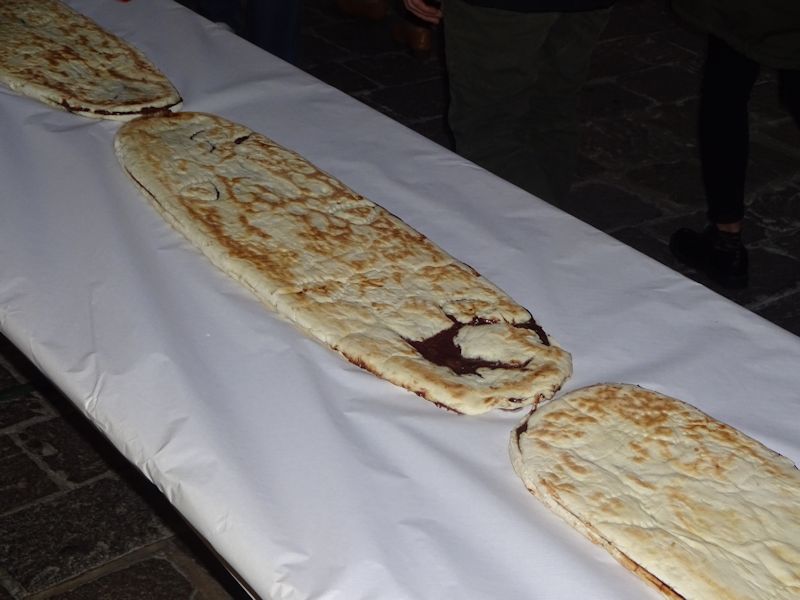
No, I don't think so. But now we know what chocolate truffles crescia are.
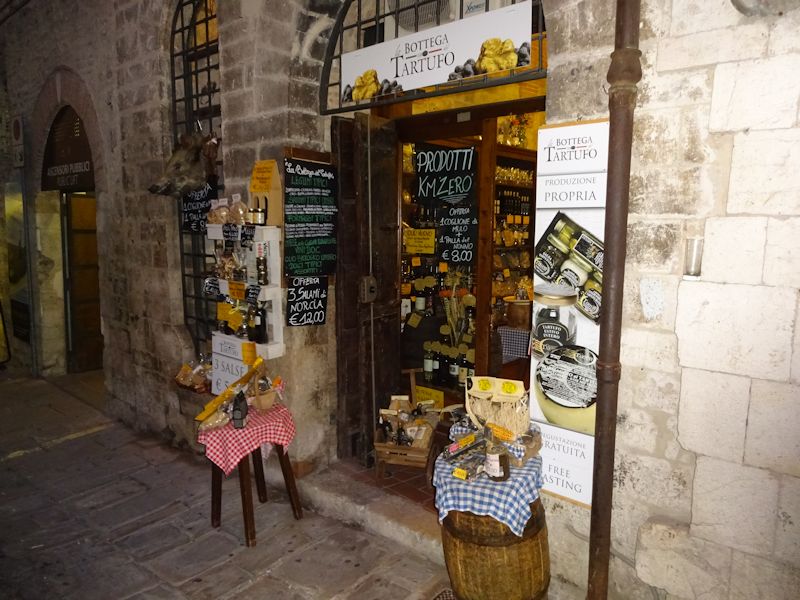
Speaking of truffles . . .
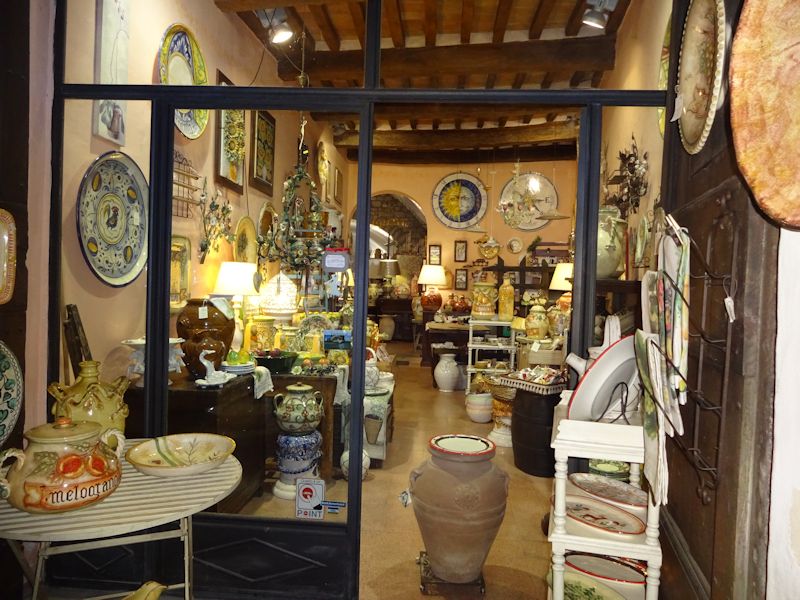
And speaking of ceramics . . . Tomorrow: Assisi.














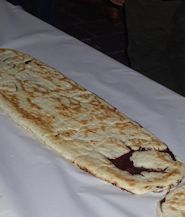 Dwight Peck's personal website
Dwight Peck's personal website









































